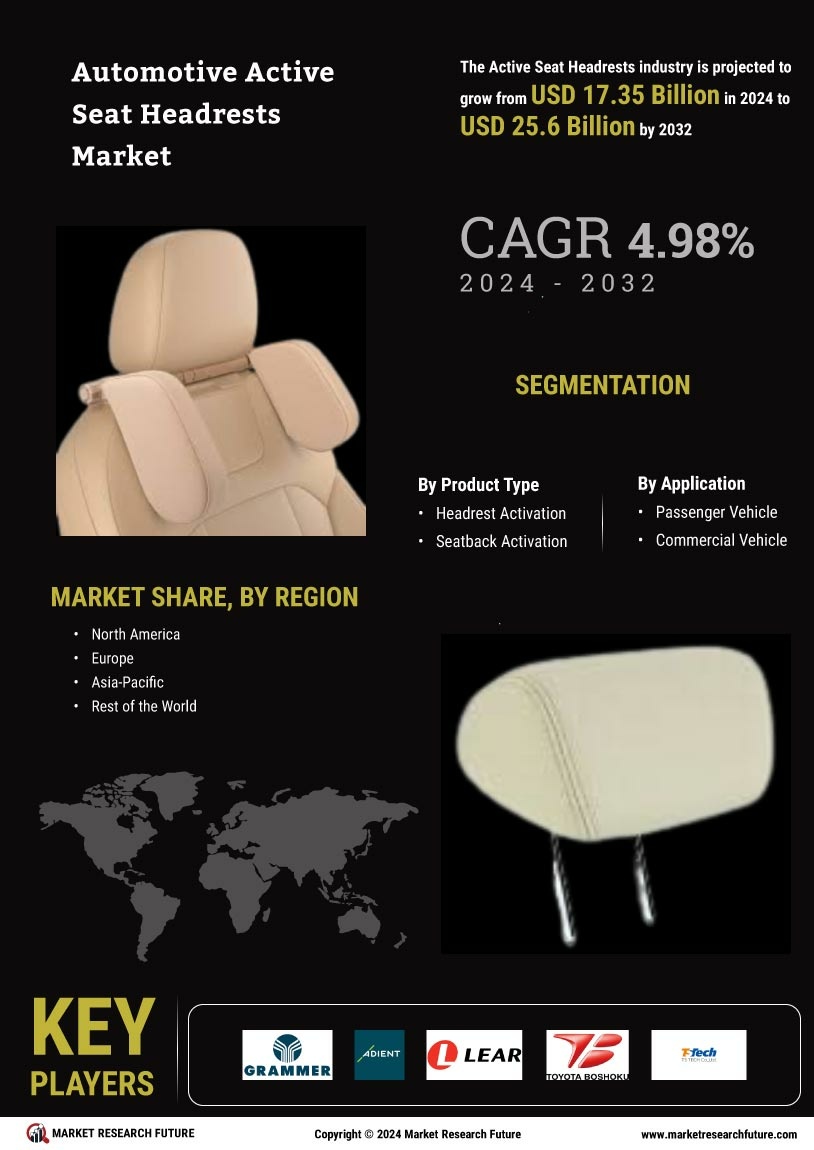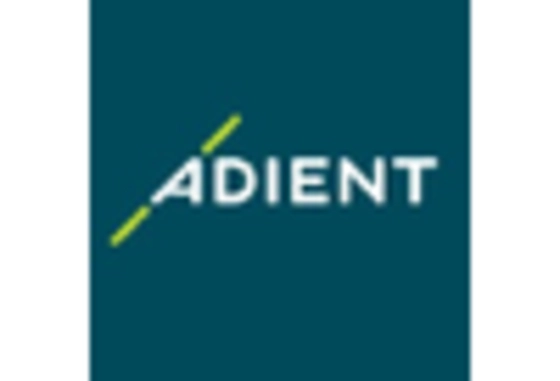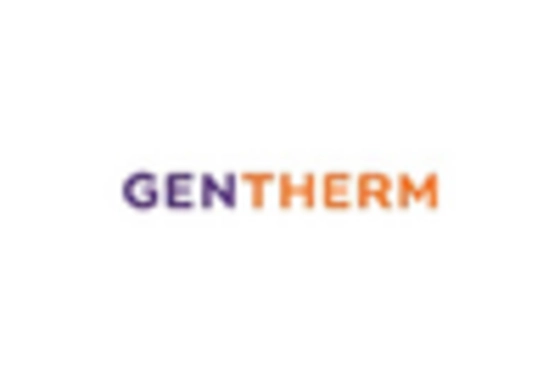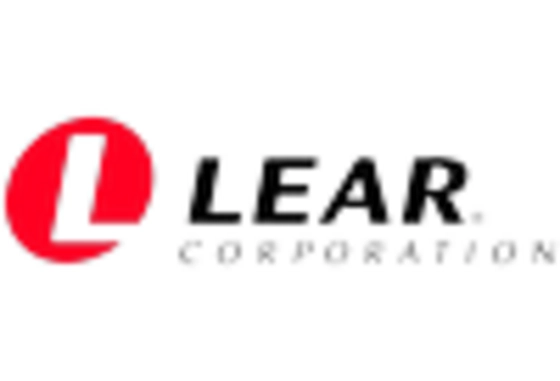The Automotive Active Seat Headrests Market is currently characterized by a dynamic competitive landscape, driven by a confluence of technological advancements and heightened consumer safety awareness. Key players such as Faurecia (France), Lear Corporation (US), and Adient (US) are at the forefront, each adopting distinct strategies to enhance their market positioning. Faurecia (France) emphasizes innovation in safety technologies, focusing on integrating advanced materials and smart systems into their headrest designs. Meanwhile, Lear Corporation (US) is pursuing a strategy of regional expansion, particularly in emerging markets, to capitalize on the growing demand for enhanced vehicle safety features. Adient (US), on the other hand, is concentrating on digital transformation, leveraging data analytics to optimize product development and customer engagement. Collectively, these strategies not only enhance individual company profiles but also intensify competition within the market, as firms strive to differentiate themselves through technological prowess and customer-centric solutions.
In terms of business tactics, companies are increasingly localizing manufacturing to reduce costs and improve supply chain efficiency. This approach is particularly relevant in a moderately fragmented market where multiple players vie for market share. The competitive structure is influenced by the collective actions of these key players, who are not only optimizing their supply chains but also forming strategic partnerships to bolster their market presence. Such collaborations often lead to shared resources and knowledge, further enhancing competitive dynamics.
In August 2025, Faurecia (France) announced a partnership with a leading automotive manufacturer to develop next-generation active headrest systems that utilize AI for enhanced safety features. This strategic move underscores Faurecia's commitment to innovation and positions the company as a leader in integrating cutting-edge technology into automotive safety solutions. The collaboration is expected to yield products that not only meet but exceed current safety standards, thereby reinforcing Faurecia's competitive edge.
In September 2025, Lear Corporation (US) unveiled a new manufacturing facility in Southeast Asia, aimed at localizing production of active seat headrests. This facility is anticipated to streamline operations and reduce lead times, allowing Lear to respond more swiftly to market demands. The establishment of this facility reflects Lear's strategic focus on regional expansion and its intent to capture a larger share of the growing automotive market in Asia.
In July 2025, Adient (US) launched a digital platform designed to enhance customer interaction and feedback on their active seat headrest products. This initiative is part of Adient's broader digital transformation strategy, which aims to leverage customer insights for product innovation. By fostering a more interactive relationship with consumers, Adient is likely to enhance its product offerings and strengthen brand loyalty, positioning itself favorably against competitors.
As of October 2025, the competitive trends within the Automotive Active Seat Headrests Market are increasingly defined by digitalization, sustainability, and the integration of artificial intelligence. Strategic alliances are becoming more prevalent, as companies recognize the value of collaboration in navigating the complexities of modern automotive manufacturing. Looking ahead, it appears that competitive differentiation will increasingly pivot from traditional price-based competition to a focus on innovation, technological advancement, and the reliability of supply chains. This shift suggests that companies that prioritize these elements will likely emerge as leaders in the evolving market landscape.


















Leave a Comment